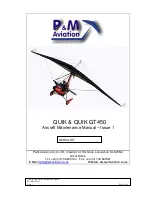
PILOT'S OPERATING HANDBOOK
and
FAA APPROVED AIRPLANE FLIGHT MANUAL
THIS DOCUMENT MUST BE
CARRIED IN THE AIRPLANE
AT All TIMES.
I
CESSNA AIRCRAFT COMPANY
1980 MODEL 172N
Serial No.\
7 l 7
3
2
7
'-f
Registration No.
':I
G
3
7
G
THIS HANDBOOK INCLUDES THE MATERIAL REQUIRED TO BE
FURNISHED TO THE PILOT BY CAR PART 3 AND CONSTITUTES
THE FAA APPROVED AIRPLANE FLIGHT MANUAL.
COPYRIGHT e 1979
CESSNA AIRCRAFT COMPANY
WICHITA, KANSAS, USA
I
f)
Member of GAMA
1 JULY 1979































